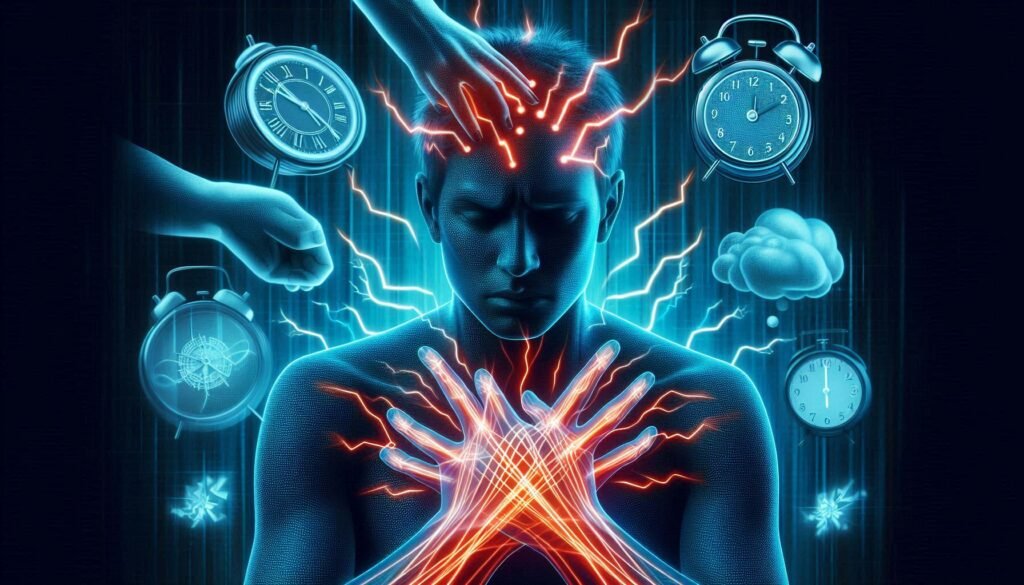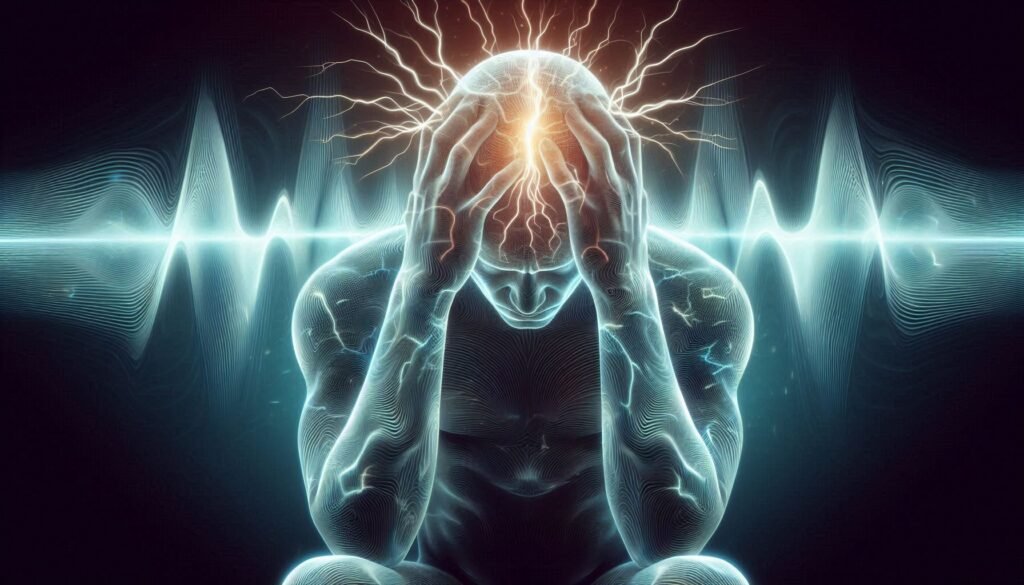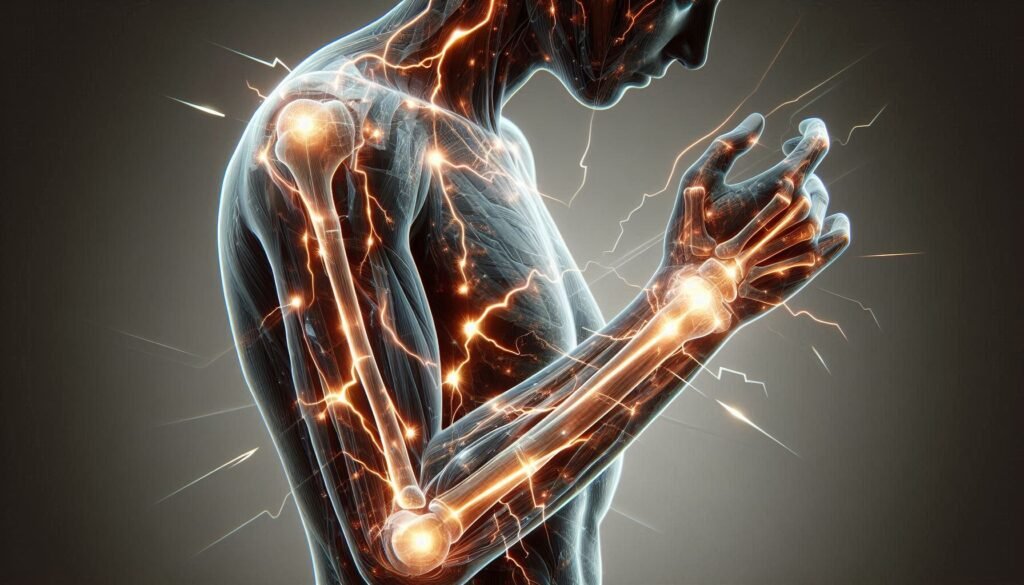Stress and anxiety are common companions in today’s fast-paced world. Many people experience a range of physical symptoms when grappling with these emotional challenges, one of the most perplexing being paresthesia. This phenomenon manifests as tingling, prickling, or numb sensations often felt in the extremities. But can stress and anxiety really be at the root of this unsettling experience?
Understanding the connection between mental health and physical sensations is crucial for anyone who has faced unexplained discomfort during stressful moments. As we delve into this topic, we’ll explore how our nervous system reacts to stressors, making sense of those puzzling feelings that seem to arise out of nowhere. Join us on this journey as we uncover the intricate relationship between stress, anxiety, and paresthesia—because knowing more about your body can empower you to take control over your well-being!

Understanding Paresthesia: More Than Just Physical Symptoms
Paresthesia is often described as an abnormal sensation in the skin, commonly perceived as tingling or numbness. While these sensations can be alarming, they are more than just physical symptoms—they provide insight into how our nervous system responds to stimuli. Understanding paresthesia requires a closer look at its underlying mechanisms.
Typically caused by nerve compression or damage, paresthesia can also arise from physiological and psychological factors. Stress and anxiety frequently disrupt the body’s normal functioning, leading to heightened sensitivity in the nervous system. This makes us more aware of sensations that might otherwise go unnoticed.
Many people experiencing stress-induced paresthesia may not realize that emotional states play a significant role in their physical well-being. When faced with overwhelming feelings, our bodies react in ways that can amplify existing discomforts or create new ones altogether.
Recognizing this connection allows individuals to address both mental health and sensory experiences simultaneously. By doing so, it becomes possible to manage symptoms effectively while fostering overall wellness.
The Physiology of Stress and Anxiety: Impact on the Nervous System
Stress and anxiety trigger a complex physiological response in the body, primarily involving the nervous system. When faced with stressors, the brain activates the hypothalamus-pituitary-adrenal (HPA) axis, leading to increased production of cortisol and adrenaline. These hormones prepare the body for a fight-or-flight reaction.
This cascade of changes affects nerve function significantly. The heightened state of alertness can cause nerve pathways to become overactive or hypersensitive. As a result, individuals may experience abnormal sensations such as tingling or numbness—common signs of paresthesia.
Moreover, chronic stress keeps these pathways engaged longer than necessary. This prolonged activation can lead to wear and tear on nerves over time, potentially resulting in more persistent symptoms.
Additionally, stress impacts blood flow by constricting blood vessels in certain areas while redirecting it to muscles required for quick response. This shift further complicates how nerves receive oxygen and nutrients needed for proper functioning.
How Stress and Anxiety Can Trigger Paresthesia Symptoms
Stress and anxiety can significantly influence the body, manifesting in various physical symptoms. One such symptom is paresthesia, which refers to abnormal sensations like tingling or numbness. This phenomenon often arises when the nervous system becomes overstimulated due to heightened stress levels.
When faced with stress, the body enters a fight-or-flight response. This reaction leads to increased heart rate and breathing rates while redirecting blood flow away from extremities. Consequently, this shift can cause temporary sensations of numbness or tingling in hands or feet.
Anxiety disorders further complicate matters by promoting hyperawareness of bodily sensations. Individuals may become fixated on minor changes in their bodies, amplifying feelings of discomfort and leading to a cycle where anxiety perpetuates physical symptoms.
Additionally, chronic muscle tension stemming from prolonged stress can compress nerves. This compression contributes to persistent paresthesia experiences as the body struggles under both mental and physical strain.
Panic Attacks and Acute Paresthesia: A Common Connection
Panic attacks can be overwhelming experiences. They often come on suddenly and are accompanied by intense fear or discomfort. One common symptom that many individuals report during a panic attack is acute paresthesia, which manifests as tingling or numbness in various body parts.
This phenomenon occurs due to the body’s fight-or-flight response, triggered by perceived threats. As anxiety levels rise, adrenaline floods the system, leading to physical changes like increased heart rate and heightened awareness. These changes can disrupt normal nerve function, resulting in sensations of tingling or prickling.
For some people, these symptoms may feel alarming and contribute to further anxiety about their health. This creates a cycle where the fear of experiencing paresthesia only intensifies stress levels during future panic attacks.
Understanding this connection between panic attacks and paresthesia can help individuals recognize their symptoms better. It encourages them to seek effective coping strategies rather than focusing solely on physical sensations experienced during an episode.
Chronic Stress and Its Long-Term Effects on Nerve Function
Chronic stress can have profound effects on the nervous system, leading to significant changes in nerve function. Prolonged exposure to stress hormones, such as cortisol, disrupts the body’s natural balance. This disruption may irritate nerves and affect their ability to transmit signals effectively.
Research shows that chronic stress can lead to inflammation within the nervous system. Inflammation can damage nerve fibers over time, resulting in a condition known as peripheral neuropathy. Symptoms often include tingling sensations or numbness in various body parts.
Moreover, chronic stress alters neurotransmitter levels, which are crucial for communication between nerve cells. When these chemicals fluctuate unpredictably due to ongoing stressors, it can exacerbate feelings of anxiety and physical discomfort.
The interplay between chronic stress and nerve function is complex yet critical for understanding conditions like paresthesia. Recognizing this connection helps highlight why managing stress is essential for maintaining overall neurological health and well-being.
Distinguishing Between Anxiety-Induced and Medical Paresthesia
Paresthesia can manifest in various ways, often leading to confusion about its origins. Anxiety-induced paresthesia typically appears during heightened stress or panic episodes. It may present as tingling, numbness, or a “pins and needles” sensation that fluctuates with anxiety levels.
Medical paresthesia usually has more consistent triggers linked to underlying health issues. Conditions such as diabetes, multiple sclerosis, or vitamin deficiencies can lead to persistent nerve damage and sustained sensations of discomfort. Unlike the temporary nature of anxiety-related symptoms, medical paresthesia tends not to resolve quickly.
Evaluating accompanying symptoms is crucial for differentiation. If you experience muscle weakness or significant pain alongside your tingling sensations, it’s essential to consult a healthcare professional. These signs could indicate a more severe condition requiring immediate attention.
Keeping track of when and how often these sensations occur can also provide valuable insights into their cause. Understanding this distinction helps ensure appropriate treatment approaches are taken for either psychological or physical conditions affecting your well-being.
The Role of Hyperventilation in Stress-Related Paresthesia
Hyperventilation is a common response to stress and anxiety. When faced with overwhelming emotions, many people tend to breathe rapidly or shallowly. This fast-paced breathing can lead to an imbalance of oxygen and carbon dioxide in the body.
As hyperventilation occurs, it causes blood vessels to constrict, particularly in the brain and extremities. This reduced blood flow may contribute to sensations like tingling or numbness—common features of paresthesia. Individuals often report these feelings as alarming, which can further exacerbate anxiety levels.
Additionally, hyperventilation triggers the fight-or-flight response. As your body prepares for perceived threats, increased adrenaline surges through your system. This heightened state can amplify physical sensations already affected by stress.
Being aware of how hyperventilation influences your body’s responses is key. Techniques such as controlled breathing exercises can help mitigate its effects and reduce the occurrence of stress-related paresthesia symptoms.
Psychological Factors: When the Mind Amplifies Physical Sensations
Psychological factors play a significant role in how we perceive physical sensations. When stress and anxiety levels rise, the mind can become hyper-focused on bodily feelings. This heightened awareness can lead to misinterpreting normal sensations as something more alarming.
Anxiety often amplifies these perceptions, causing individuals to experience symptoms like tingling or numbness more intensely than they might under relaxed conditions. The brain’s increased vigilance during stressful periods makes it difficult to distinguish between genuine medical issues and benign sensations.
Moreover, cognitive distortions—such as catastrophizing—can contribute to this amplification. Individuals may jump to conclusions about their health based on minimal signs, fostering even greater anxiety and discomfort.
Additionally, past experiences with pain or illness can create a feedback loop where the mind anticipates distressing sensations that may not actually be present. This interplay between psychological states and physical perception highlights how deeply interconnected our mental and physical well-being truly are.
Managing Stress and Anxiety to Alleviate Paresthesia Symptoms
Managing stress and anxiety can significantly alleviate paresthesia symptoms. Simple lifestyle changes are often the first step in this journey. Regular exercise, even a daily walk, helps release endorphins, reducing overall tension. Incorporating physical activity into your routine can create a positive feedback loop, enhancing both mental and physical well-being.
Mindfulness practices such as meditation or yoga also prove beneficial for many individuals. These techniques encourage relaxation and help ground you in the present moment. Focusing on your breath during these activities can calm anxious thoughts that may trigger sensations of tingling or numbness.
Adequate sleep is crucial too. Poor sleep habits exacerbate stress levels, creating an ongoing cycle of discomfort. Prioritizing rest allows your body to recover and better handle stressful situations without manifesting through paresthesia symptoms.
Talking to friends or professionals about your feelings provides emotional support and validation. Connecting with others can reduce isolation while fostering coping strategies tailored to manage stress effectively.
When to Seek Professional Help: Treating Stress-Related Paresthesia
Experiencing paresthesia as a result of stress and anxiety can be distressing. While many individuals may manage these symptoms through self-care techniques or lifestyle adjustments, there are times when seeking professional help becomes essential.
If you notice that your sensations of tingling, numbness, or unusual feelings persist despite efforts to reduce stress and anxiety, it’s crucial to consult a healthcare provider. This is particularly important if the paresthesia affects daily activities or quality of life. A medical professional can conduct thorough assessments, rule out other underlying conditions, and provide tailored treatment plans.
Therapies such as cognitive behavioral therapy (CBT), mindfulness practices, or medication may be recommended based on individual needs. Additionally, working with mental health professionals can enhance coping mechanisms for managing stress effectively.
Listening to your body is key; don’t ignore persistent symptoms that disrupt your well-being. By addressing both emotional and physical aspects early on with professional support, you’ll pave the way toward feeling better—and reclaiming control over your life amidst stress and anxiety-induced paresthesia.


